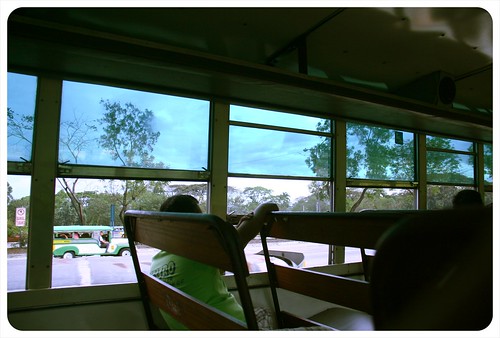Gusto ko iparating ang taos-puso kong pasasalamat sa lahat ng bumati. Hindi ko man kayo mapasalamatan isa-isa, nabasa ko lahat ng mga messages ninyo at masaya ako na bahagi kayo ng kaganapang ‘to.
Congratulations to all the parents who made this happen for all us new lawyers. This achievement is yours. Congratulations and thank you!
‘Di ko alam kung sa Pilipinas lang ganito natin idina-dakila ang pagiging abogado. I have a theory that more than the fact na napakahirap maging abogado sa Pilipinas, malaki ang pagtingin natin sa mga abogado at ganoon na lang kung ipagdiwang ang pagkakapasa sa bar exam dahil sa pangangailangan ng indibidwal, pamilya, at mga grupo na pangalagaan at ipaglaban ang kani-kanilang interes. Perhaps a manifestation of the many contradictions in society, or of its weak institutions that families celebrate having the advantage of having a lawyer to protect their interests. But that is for social scientists to discuss adequately. Othwerise, what are lawyers for, really?
I have just hurdled the infamous “bar exams,” the licensure examinations for aspiring lawyers in the Philippines.
Besides actually passing the exams, successfully concluding the eight (8) examinations scheduled over the four (4) Sundays of November is a significant milestone for all law school graduates, having gone through four or five years of law school, in itself a struggle and a feat. It is the culminating point of the journey taken by many young and aspiring lawyers. As with any culminating point or climax, it is treated with much significance by those who share the same epic narrative and by those who share our aspirations.
This conclusion is of great relief for me, in particular, I would dare say, because it did not take me four or five years—it took me seven years of arduous study which I began back in 2008, as an idealistic 20 year-old fresh graduate from film school. Wide-eyed but terribly unacquainted with the intensive study necessary, I got myself dismissed from the University of the Philippines (UP Law) after a year and a half for failing two basic subjects. I took a break for a little more than half a year, and began another parallel journey in the University of Santo Tomas (UST Law), where it took me many more failures and five more years before I finally made it to graduation day.
To close its celebration of its Quadricentennial, the University of Santo Tomas is holding a two-day festival (January 25 – 26) that hopes to recreate UST in the “perspective of the cultural milieu of old Manila at the turn of the 19th century” through “period costumes, songs, dances, poems and festivity.”
This, I think, is a great opportunity for us to appreciate the role of UST students in Philippine history. It was, after all, the period of Jose Rizal, Emilio Jacinto, Apolinario Mabini and Padre Jose Burgos. However, I am disturbed by the tendency of the administration and many students to regard this celebration as a mere pageantry of costumes and deodorized commemoration of whatever concept of grandeur they have of “old Manila,” devoid of any socio-political context of its times.

I’ve been taking the ‘ordinary’ bus to school the past three weeks. ‘Ordinary’ buses are what people in Metro Manila call buses that don’t have airconditioning. They have the cheapest fares, and they are most usually the fastest among public utility vehicles (PUV’s).
Yesterday, the bus I was riding to school got ticketed for overspeeding along Commonwealth Avenue, a road known as, aside from being the country’s widest avenue, the killer highway–(it has been declared a ‘traffic discipline’ zone since the beginning of the year precisely because of this). The bus got held up by MMDA traffic enforcers for around fifteen minutes before it got ‘released’. Then it resumed speeding through Quezon Avenue!
Another reason why ordinary buses seem to be the fastest among PUV’s is that they don’t pick up passengers as often as jeepneys nor do they stop as long as jeepneys, FX taxis or air-conditioned buses when picking up passengers. That means when you hail an ordinary bus you have to jog a little in the same direction as the bus in order to grab the railings before hopping in. Sometimes they stop for passengers while in the middle of the road so you have to do some crisscrossing with other vehicles as well.
When all seats are occupied, you have to grab the overhead railings instead and stand on the aisle for the rest of the trip, or until a seat frees up. It feels like hanging on monkey bars at the playground as you sway side to side, back and forward as the bus speeds through the highway.
Since they’re the cheapest, especially on longer routes, ordinary buses are highly patronized by students, construction workers and other minimum (and below-minimum) wage earners.
I appreciate ordinary buses. Whether on provincial trips (I rode ‘ordinary’ buses to Sagada, Zambales, Infanta, Iloilo, Albay), or here in the Metro Manila, I seem to have grown a fascination over them. It doesn’t feel ordinary at all.
